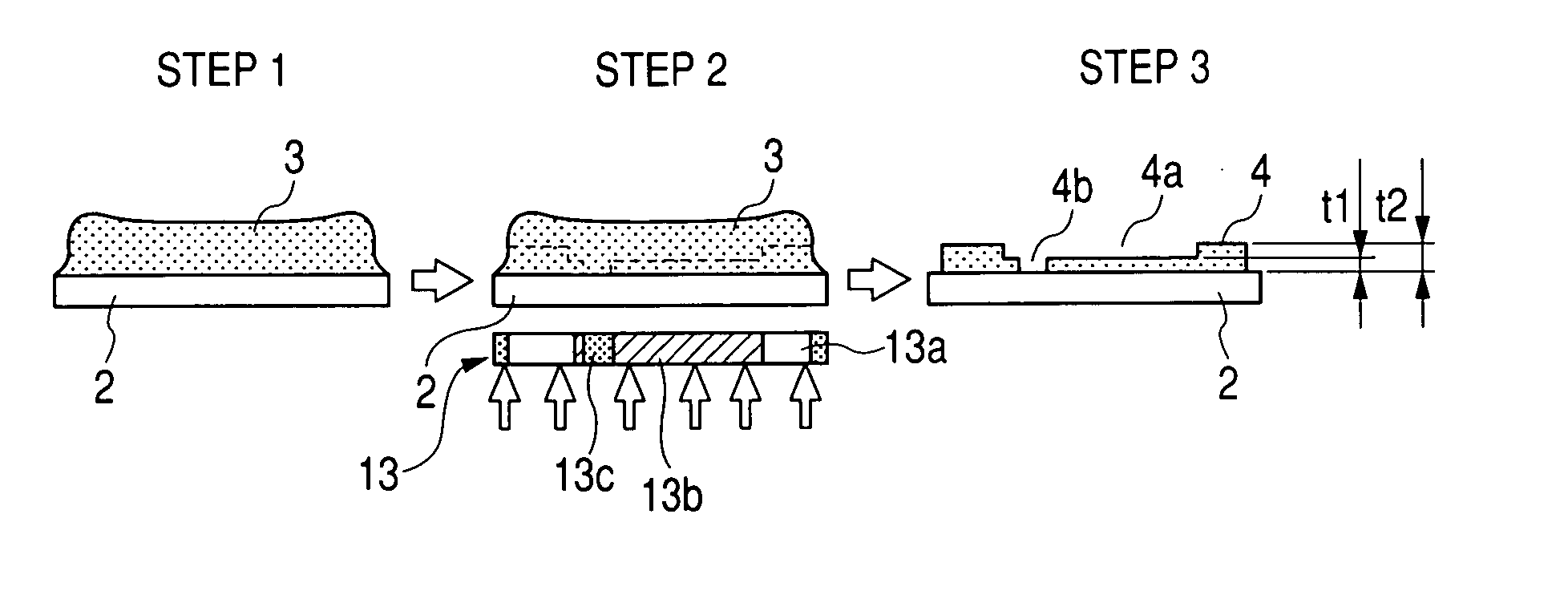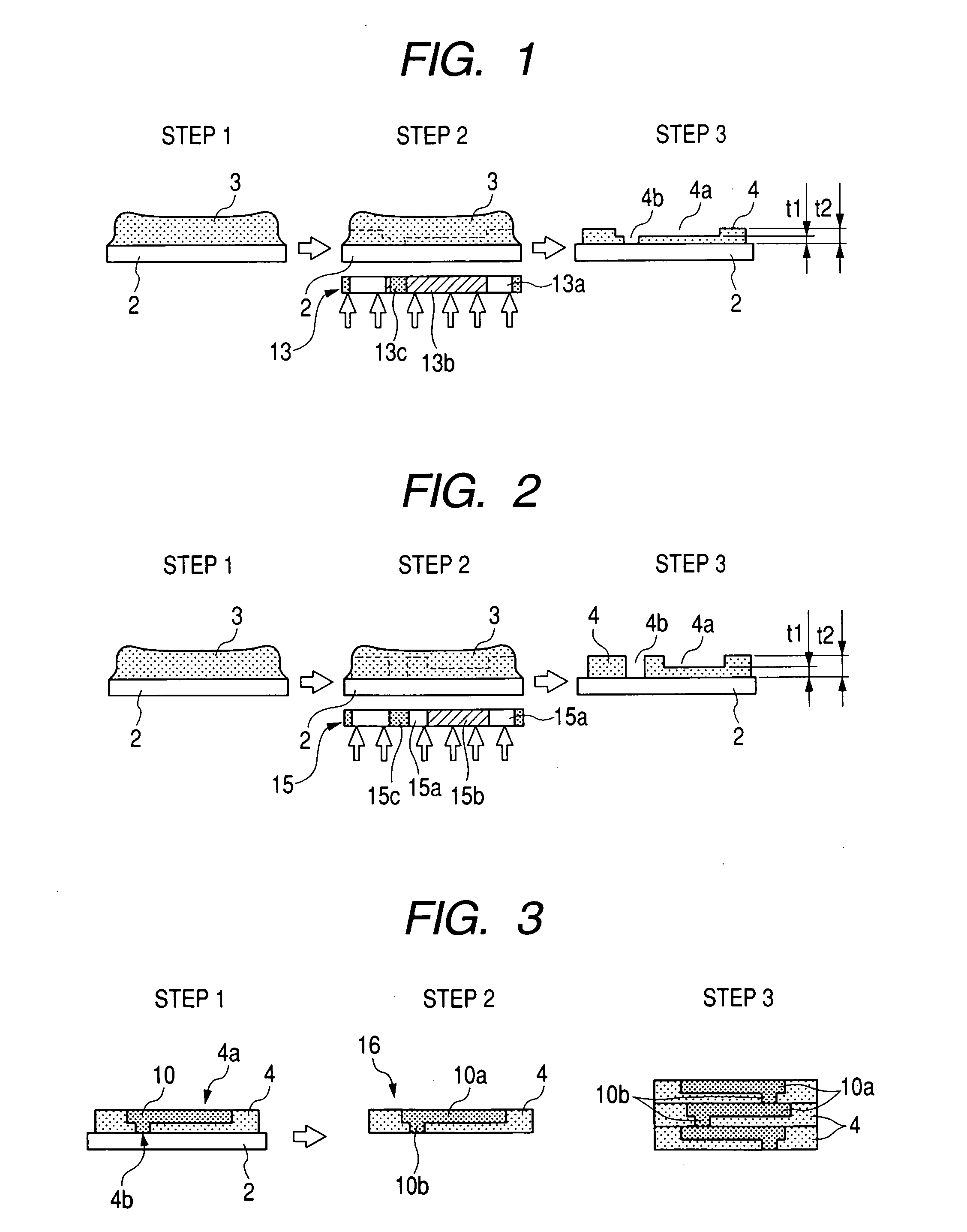Method for manufacturing ceramic green sheet and method for manufacturing electronic part using that ceramic green sheet
a technology of ceramic green sheets and green sheets, which is applied in the direction of capacitor manufacturing, circuit masks, conductive pattern formation, etc., can solve the problems of inability to add a process of shaping them after they are formed, short-circuit or conduction failure, and unevenness, etc., to achieve excellent shape accuracy, improve quality, and thickness
- Summary
- Abstract
- Description
- Claims
- Application Information
AI Technical Summary
Benefits of technology
Problems solved by technology
Method used
Image
Examples
first embodiment
[0035] (First Embodiment)
[0036] As described in the above general description of the embodiments, in the exposure process, the method of performing exposure with different light quantities for each area by using a simple light source and a mask may includes a method using a simple light source and a mask, a method of drawing a pattern using light having a significant intensity such as laser light, and a method of forming a pattern using an area light source in which a plurality of light sources are arranged. However, the process that is currently used most generally and considered to be most reliable is the process using a mask. Accordingly, a process using a mask will be described as an example.
[0037]FIG. 1 shows a layer formation process according to the first embodiment of the present invention. FIG. 1 shows a cross sectional structure of layers or a sheet taken in the thickness direction in various stages of the process. In this embodiment, a photosensitive layer 3 containing p...
second embodiment
[0045] (Second Embodiment)
[0046]FIG. 2 is a diagram similar to FIG. 1, which shows a cross sectional structure of layers or a sheet taken along the thickness direction in various stages of the process. The other drawing that will be referred to in the following shall also show a cross sectional structure of the sheet in various stages of a process. This embodiment is directed to a case in which a through hole is formed in an insulating layer 4. Specifically, a photosensitive material 3 is applied on a base member 2 made of a PET film (step 1). Next in step 2, a mask 15 in which a desired electrode pattern 15b and a through hole pattern 15c are separately formed is disposed in close contact with the back side surface of the base member 2, and ultraviolet radiation is applied from the back side thereof.
[0047] In this process, the exposure amount is controlled so that the thickness of the cured portion of the photosensitive layer 3 will be t1. The transmittance for ultraviolet light o...
PUM
| Property | Measurement | Unit |
|---|---|---|
| thickness | aaaaa | aaaaa |
| thickness | aaaaa | aaaaa |
| thickness | aaaaa | aaaaa |
Abstract
Description
Claims
Application Information
 Login to View More
Login to View More - R&D
- Intellectual Property
- Life Sciences
- Materials
- Tech Scout
- Unparalleled Data Quality
- Higher Quality Content
- 60% Fewer Hallucinations
Browse by: Latest US Patents, China's latest patents, Technical Efficacy Thesaurus, Application Domain, Technology Topic, Popular Technical Reports.
© 2025 PatSnap. All rights reserved.Legal|Privacy policy|Modern Slavery Act Transparency Statement|Sitemap|About US| Contact US: help@patsnap.com



